What are the signs of throat infection. Throat Infection: Symptoms, Causes, and Treatment Options
What are the common signs of a throat infection. How can you differentiate between viral and bacterial throat infections. What are the potential complications of untreated strep throat. When should you seek medical attention for a sore throat.
Understanding Throat Infections: An Overview
Throat infections, particularly those affecting the tonsils, are a common ailment, especially among children. These infections can be caused by various pathogens, with viruses being the most frequent culprits. However, bacterial infections, particularly those caused by streptococcal bacteria, also play a significant role. Understanding the nature of throat infections, their symptoms, and potential complications is crucial for proper management and timely treatment.
Viral vs. Bacterial Throat Infections: Key Differences
Distinguishing between viral and bacterial throat infections can be challenging, as symptoms often overlap. However, certain characteristics can help differentiate between the two:

- Viral infections: Often accompanied by cold-like symptoms such as runny nose, cough, and congestion
- Bacterial infections: Typically present with more severe throat pain, fever, and swollen lymph nodes
Is there a definitive way to determine the cause of a throat infection? While a physical examination can provide clues, a throat culture or rapid strep test is often necessary to confirm a bacterial infection, particularly strep throat.
Common Symptoms of Throat Infections
Regardless of the underlying cause, throat infections typically present with a range of symptoms that can vary in severity. These may include:
- Severe pain when swallowing or speaking
- Redness and swelling of the tonsils
- White patches on the tonsils
- Swollen and tender lymph nodes in the neck
- Fever and headache
- Upset stomach
Do all throat infections cause fever? Not necessarily. While fever is common in bacterial infections like strep throat, it may be absent or mild in viral throat infections.
Unique Symptoms in Specific Infections
Certain throat infections may present with additional symptoms:

- Mononucleosis: Extreme fatigue, prolonged fever, and swollen lymph nodes throughout the body
- Diphtheria: Grayish membrane covering the throat and tonsils
- Gonorrhea: May cause throat infection without typical genital symptoms
The Role of Tonsils in Throat Infections
Tonsils play a crucial role in the body’s immune defense system. As part of the lymphoid tissue network, they act as sentinels, trapping and fighting off invading pathogens. However, this function also makes them susceptible to frequent infections.
Can you still get throat infections if your tonsils have been removed? Yes, individuals who have undergone tonsillectomy can still develop throat infections, although they may be less frequent or severe.
Tonsil Stones: A Common Complication
In individuals prone to recurrent tonsil infections, small pits in the tonsils may become filled with hardened secretions, forming tonsil stones. These can lead to:
- Chronic bad breath due to trapped bacteria
- Increased susceptibility to future bouts of tonsillitis
Potential Complications of Untreated Strep Throat
While many throat infections resolve on their own, untreated strep throat can lead to serious complications. These may include:

- Tonsillar cellulitis or abscess: A severe infection of the tissues surrounding the tonsils
- Rheumatic fever: An inflammatory condition affecting the heart, joints, skin, and nervous system
- Glomerulonephritis: Inflammation of the kidneys that can lead to kidney damage
How common are these complications? While relatively rare in developed countries with access to antibiotics, they remain a significant concern, particularly in underserved populations.
Diagnosis and Treatment of Throat Infections
Proper diagnosis is crucial for effective treatment of throat infections. The process typically involves:
- Physical examination of the throat and neck
- Evaluation of symptoms and medical history
- Throat culture or rapid strep test, if bacterial infection is suspected
Treatment approaches vary depending on the underlying cause:
- Viral infections: Symptomatic relief with analgesics, rest, and hydration
- Bacterial infections: Antibiotic therapy, typically penicillin or amoxicillin for strep throat
Is antibiotic treatment always necessary for throat infections? No, antibiotics are only effective against bacterial infections and should not be used for viral throat infections.

When to Consider Tonsillectomy
In cases of recurrent or chronic tonsil infections, surgical removal of the tonsils (tonsillectomy) may be recommended. This is typically considered when:
- Infections occur frequently (more than 7 times in one year or 5 times per year for two consecutive years)
- Infections significantly impact quality of life
- Complications such as peritonsillar abscess occur
Prevention Strategies for Throat Infections
While not all throat infections can be prevented, certain measures can help reduce the risk:
- Practicing good hand hygiene
- Avoiding close contact with individuals who have active infections
- Maintaining a healthy lifestyle to support immune function
- Getting vaccinated against influenza and other preventable diseases
Can dietary changes help prevent throat infections? While no specific diet can prevent infections, maintaining a balanced diet rich in vitamins and minerals can support overall immune health.
When to Seek Medical Attention
Most throat infections resolve on their own or with simple home remedies. However, medical attention should be sought if:

- Symptoms persist for more than a week
- Difficulty breathing or swallowing occurs
- High fever (above 101°F or 38.3°C) develops
- Severe pain or swelling is present
- Blood appears in saliva or phlegm
Should you visit a doctor for every sore throat? Not necessarily. Mild sore throats often resolve without medical intervention. However, if symptoms are severe, persistent, or accompanied by other concerning signs, it’s best to consult a healthcare provider.
Special Considerations for Children
Parents should be particularly vigilant when it comes to throat infections in children. Seek medical attention if:
- The child has difficulty swallowing or breathing
- Drooling is excessive
- The child appears severely ill or dehydrated
Throat infections, while common, can range from minor inconveniences to serious health concerns. Understanding the signs, symptoms, and potential complications is crucial for proper management and timely treatment. By staying informed and taking appropriate preventive measures, individuals can minimize the impact of these infections on their health and well-being.

Throat Infection – Ear, Nose, and Throat Disorders
By
Alan G. Cheng
, MD, Stanford University
Reviewed/Revised May 2022 | Modified Sep 2022
VIEW PROFESSIONAL VERSION
GET THE QUICK FACTS
Topic Resources
Infections of the throat and/or tonsils are common, particularly among children.
Throat infections are usually caused by a virus but may be caused by bacteria such as streptococcal bacteria.
Symptoms include severe pain with swallowing and swollen, red tonsils.
The diagnosis is based on an examination of the throat.

If untreated, tonsillopharyngitis that is caused by bacteria may become a tonsillar abscess.
Pain is relieved with analgesics, and a streptococcal infection is treated with antibiotics.
Sometimes the tonsils have to be surgically removed.
The tonsils contain lymphoid tissue Components of the Immune System The immune system is designed to defend the body against foreign or dangerous invaders. Such invaders include Microorganisms (commonly called germs, such as bacteria, viruses, and fungi) Parasites… read more that is part of the body’s immune defense system. Thus, the tonsils and nearby throat tissue frequently become infected by organisms that enter the nose and throat.
People who have had their tonsils removed can still get throat infections.
Throat infections are usually caused by a virus. Most often, it is one of the viruses that cause the common cold, such as rhinovirus, adenovirus, influenza virus, or respiratory syncytial virus. Less often, another virus is involved, such as the Epstein-Barr virus Infectious Mononucleosis Epstein-Barr virus causes a number of diseases, including infectious mononucleosis. The virus is spread through kissing. Symptoms vary, but the most common are extreme fatigue, fever, sore throat… read more (which causes mononucleosis) or human immunodeficiency virus Human Immunodeficiency Virus (HIV) Infection (HIV).
Less often, another virus is involved, such as the Epstein-Barr virus Infectious Mononucleosis Epstein-Barr virus causes a number of diseases, including infectious mononucleosis. The virus is spread through kissing. Symptoms vary, but the most common are extreme fatigue, fever, sore throat… read more (which causes mononucleosis) or human immunodeficiency virus Human Immunodeficiency Virus (HIV) Infection (HIV).
In less than one third of people, throat infections are caused by a bacterial infection. Group A streptococcus (strep throat Streptococcal Infections Streptococcal infections are caused by any one of several species of Streptococcus. These gram-positive, sphere-shaped (coccal) bacteria (see figure ) cause many disorders, including… read more ) is the most common bacterial cause and usually occurs in children between age 5 and age 15. Strep throat is less common in children under age 3 and in older adults. Untreated strep throat sometimes causes complications.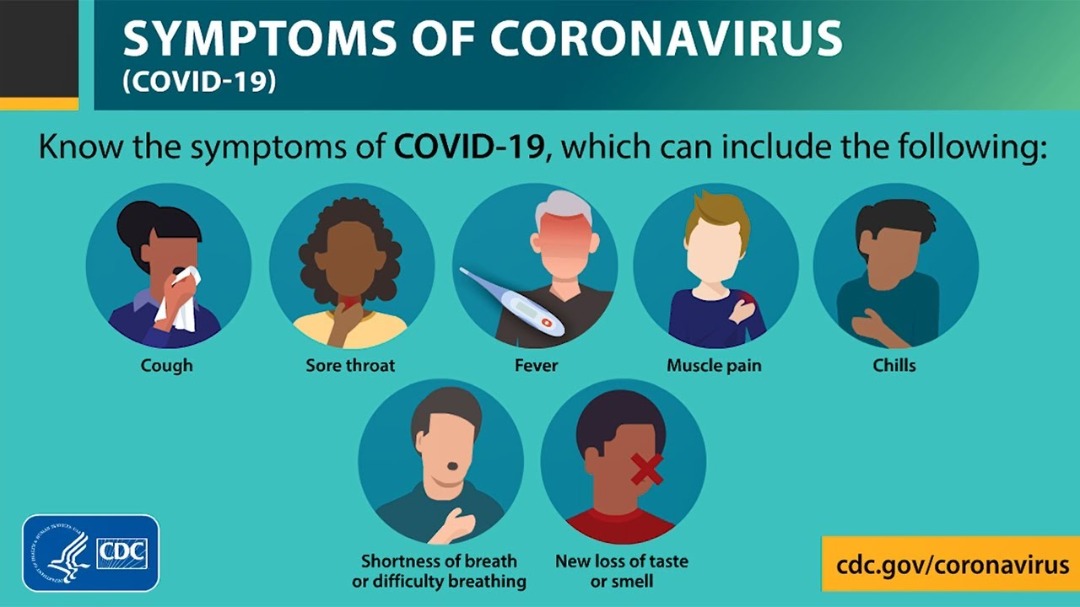 Complications can include tonsillar cellulitis or abscess Tonsillar Cellulitis and Tonsillar Abscess Tonsillar cellulitis is a bacterial infection of the tissues around the tonsils. A tonsillar abscess is a collection of pus behind the tonsils. Sometimes, bacteria that infect the throat spread… read more , rheumatic fever Rheumatic Fever Rheumatic fever is inflammation of the joints, heart, skin, and nervous system, resulting from a complication of untreated streptococcal infection of the throat. This condition is a reaction… read more , and kidney inflammation Glomerulonephritis Glomerulonephritis is a disorder of glomeruli (clusters of microscopic blood vessels in the kidneys with small pores through which blood is filtered). It is characterized by body tissue swelling… read more (glomerulonephritis). Rarely, bacterial infections such as gonorrhea and diphtheria cause throat infections.
Complications can include tonsillar cellulitis or abscess Tonsillar Cellulitis and Tonsillar Abscess Tonsillar cellulitis is a bacterial infection of the tissues around the tonsils. A tonsillar abscess is a collection of pus behind the tonsils. Sometimes, bacteria that infect the throat spread… read more , rheumatic fever Rheumatic Fever Rheumatic fever is inflammation of the joints, heart, skin, and nervous system, resulting from a complication of untreated streptococcal infection of the throat. This condition is a reaction… read more , and kidney inflammation Glomerulonephritis Glomerulonephritis is a disorder of glomeruli (clusters of microscopic blood vessels in the kidneys with small pores through which blood is filtered). It is characterized by body tissue swelling… read more (glomerulonephritis). Rarely, bacterial infections such as gonorrhea and diphtheria cause throat infections.
People with a throat infection have severe pain with swallowing and usually speaking. The pain is sometimes also felt in the ears. Some people have fever, headache, and an upset stomach. The tonsils are red and swollen and sometimes have white patches on them. Lymph nodes in the neck may become swollen and tender.
The pain is sometimes also felt in the ears. Some people have fever, headache, and an upset stomach. The tonsils are red and swollen and sometimes have white patches on them. Lymph nodes in the neck may become swollen and tender.
In people who have frequent tonsil infections, the normal small pits in the tonsils sometimes become filled with white, hardened secretions that resemble tiny stones. These stones can trap odor-causing bacteria, causing chronic bad breath, and can predispose people to subsequent bouts of tonsillitis.
People with a cold virus infection Common Cold The common cold is a viral infection of the lining of the nose, sinuses, and throat. Many different viruses cause colds. Usually, colds are spread when a person’s hands come in contact with… read more often have a runny, congested nose and a cough. People with mononucleosis Infectious Mononucleosis Epstein-Barr virus causes a number of diseases, including infectious mononucleosis. The virus is spread through kissing. Symptoms vary, but the most common are extreme fatigue, fever, sore throat… read more often feel extremely tired and have many swollen lymph nodes, and their increasing tonsillar swelling may begin to block air when a person breathes, causing noisy breathing.
Symptoms vary, but the most common are extreme fatigue, fever, sore throat… read more often feel extremely tired and have many swollen lymph nodes, and their increasing tonsillar swelling may begin to block air when a person breathes, causing noisy breathing.
Doctors recognize a throat infection by viewing the throat. However, because viral infections and bacterial infections often cause the same appearance in the throat, it is difficult for doctors to know whether the cause is a viral or bacterial infection just by looking at the throat. However, people with a runny nose and cough are more likely to have a viral infection.
Because it is often considered important to identify strep throat Streptococcal Infections Streptococcal infections are caused by any one of several species of Streptococcus. These gram-positive, sphere-shaped (coccal) bacteria (see figure ) cause many disorders, including… read more (which is generally treated with antibiotics), doctors sometimes swab the person’s throat and do tests to identify streptococcus bacteria.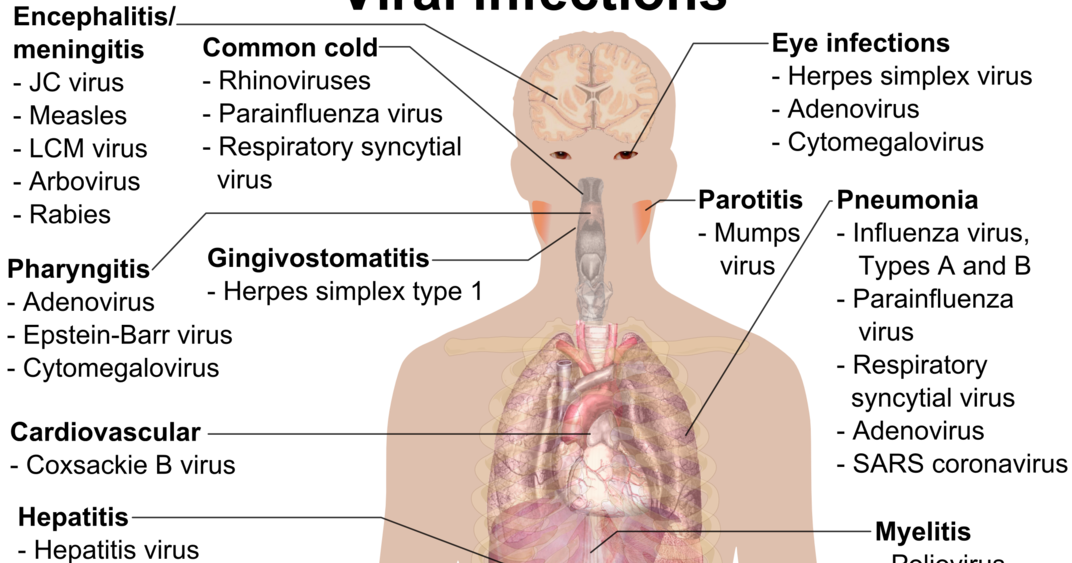 Typically, doctors test most children but test adults only if they meet certain criteria, such as having white patches on the tonsils (tonsillar exudates), swollen and tender lymph nodes in the neck, fever, and an absence of cough. However, not all experts agree on when testing should be done or even when antibiotics should be given.
Typically, doctors test most children but test adults only if they meet certain criteria, such as having white patches on the tonsils (tonsillar exudates), swollen and tender lymph nodes in the neck, fever, and an absence of cough. However, not all experts agree on when testing should be done or even when antibiotics should be given.
Pain relievers (analgesics)
For strep throat, antibiotics
Sometimes surgical removal of the tonsils
Analgesics given by mouth, such as acetaminophen or nonsteroidal anti-inflammatory drugs (NSAIDs), often help reduce pain in people with a throat infection. Gargling with warm salt water has often been recommended but has not been shown to help. Some doctors also give a single dose of a corticosteroid, dexamethasone, particularly if symptoms are severe; dexamethasone may shorten the duration of symptoms. It may also help lessen airway blockage caused by mononucleosis.
People with a strep infection are given an antibiotic, usually penicillin or amoxicillin. People who are allergic to penicillin may be given clindamycin.
People who have repeated streptococcal infections of their tonsils may need to have their tonsils removed (tonsillectomy), according to suggested guidelines.
Typically, it is children who need tonsillectomy, including children who have had more than 6 infections in 1 year, more than 4 infections in each of 2 years, or more than 3 infections per year for 3 years. Doctors consider tonsillectomy if the child has an acute infection that is severe and persistent despite being treated with antibiotics, if the child has significant obstruction (including obstructive sleep disorder) or a recurrent peritonsillar abscess, or if they suspect cancer.
For adults, doctors do not use these specific criteria for when to do tonsillectomy. However, doctors may do tonsillectomy in adults who have severe bad breath due to tonsillar stones.
For both children and adults, doctors do allow for individual differences when deciding whether to recommend a tonsillectomy.
There are numerous effective techniques for tonsillectomy. Doctors can use a scalpel or an electrocautery device, or they can destroy the tonsils using radio waves.
Fewer than 2% of people, adults more than children, have bleeding complications resulting from a tonsillectomy. Bleeding typically occurs within 24 hours of surgery or after about 7 days. People who have bleeding after a tonsillectomy should go to a hospital.
VIDEO
Partial tonsillectomy is sometimes done in patients with tonsillitis that causes some blockage in the throat. Part of the enlarged tonsil can be removed by shaving the tonsil using special scissors, or using other devices such as laser, radiofrequency, or electrocautery. It works as well as total tonsillectomy to relieve airway obstruction that is causing snoring and interruption of sleep. Tonsils do not usually grow back.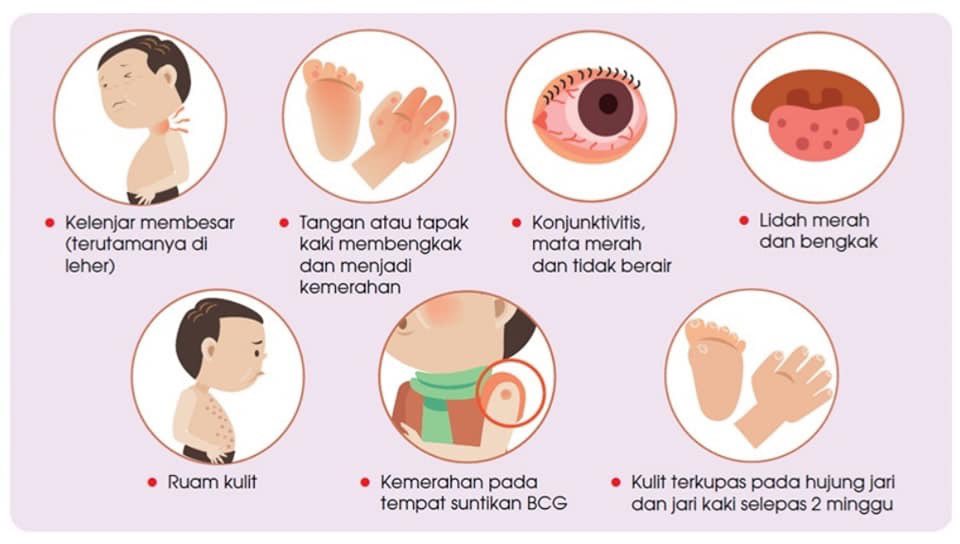
| Generic Name | Select Brand Names |
|---|---|
acetaminophen | 7T Gummy ES, Acephen, Aceta, Actamin, Adult Pain Relief, Anacin Aspirin Free, Apra, Children’s Acetaminophen, Children’s Pain & Fever , Comtrex Sore Throat Relief, ED-APAP, ElixSure Fever/Pain, Feverall, Genapap, Genebs, Goody’s Back & Body Pain, Infantaire, Infants’ Acetaminophen, LIQUID PAIN RELIEF, Little Fevers, Little Remedies Infant Fever + Pain Reliever, Mapap, Mapap Arthritis Pain, Mapap Infants, Mapap Junior, M-PAP, Nortemp, Ofirmev, Pain & Fever , Pain and Fever , PAIN RELIEF , PAIN RELIEF Extra Strength, Panadol, PediaCare Children’s Fever Reducer/Pain Reliever, PediaCare Children’s Smooth Metls Fever Reducer/Pain Reliever, PediaCare Infant’s Fever Reducer/Pain Reliever, Pediaphen, PHARBETOL, Plus PHARMA, Q-Pap, Q-Pap Extra Strength, Silapap, Triaminic Fever Reducer and Pain Reliever, Triaminic Infant Fever Reducer and Pain Reliever, Tylenol, Tylenol 8 Hour, Tylenol 8 Hour Arthritis Pain, Tylenol 8 Hour Muscle Aches & Pain, Tylenol Arthritis Pain, Tylenol Children’s, Tylenol Children’s Pain+Fever, Tylenol CrushableTablet, Tylenol Extra Strength, Tylenol Infants’, Tylenol Infants Pain + Fever, Tylenol Junior Strength, Tylenol Pain + Fever, Tylenol Regular Strength, Tylenol Sore Throat, XS No Aspirin, XS Pain Reliever |
dexamethasone | AK-Dex, Baycadron, Dalalone, Dalalone D. P, Dalalone L.A, Decadron, Decadron-LA, Dexabliss, Dexacort PH Turbinaire, Dexacort Respihaler, DexPak Jr TaperPak, DexPak TaperPak, Dextenza, DEXYCU, DoubleDex, Dxevo, Hemady, HiDex, Maxidex, Ocu-Dex , Ozurdex, ReadySharp Dexamethasone, Simplist Dexamethasone, Solurex, TaperDex, ZCORT, Zema-Pak, ZoDex, ZonaCort 11 Day, ZonaCort 7 Day P, Dalalone L.A, Decadron, Decadron-LA, Dexabliss, Dexacort PH Turbinaire, Dexacort Respihaler, DexPak Jr TaperPak, DexPak TaperPak, Dextenza, DEXYCU, DoubleDex, Dxevo, Hemady, HiDex, Maxidex, Ocu-Dex , Ozurdex, ReadySharp Dexamethasone, Simplist Dexamethasone, Solurex, TaperDex, ZCORT, Zema-Pak, ZoDex, ZonaCort 11 Day, ZonaCort 7 Day |
amoxicillin | Amoxil, Dispermox, Moxatag, Moxilin , Sumox, Trimox |
clindamycin | Cleocin, Cleocin Ovules, Cleocin Pediatric, Cleocin T, CLIN, Clindacin ETZ, Clindacin-P, Clinda-Derm , Clindagel, ClindaMax, ClindaReach, Clindesse, Clindets, Evoclin, PledgaClin, XACIATO |
NOTE:
This is the Consumer Version.
DOCTORS:
VIEW PROFESSIONAL VERSION
VIEW PROFESSIONAL VERSION
Copyright © 2023 Merck & Co.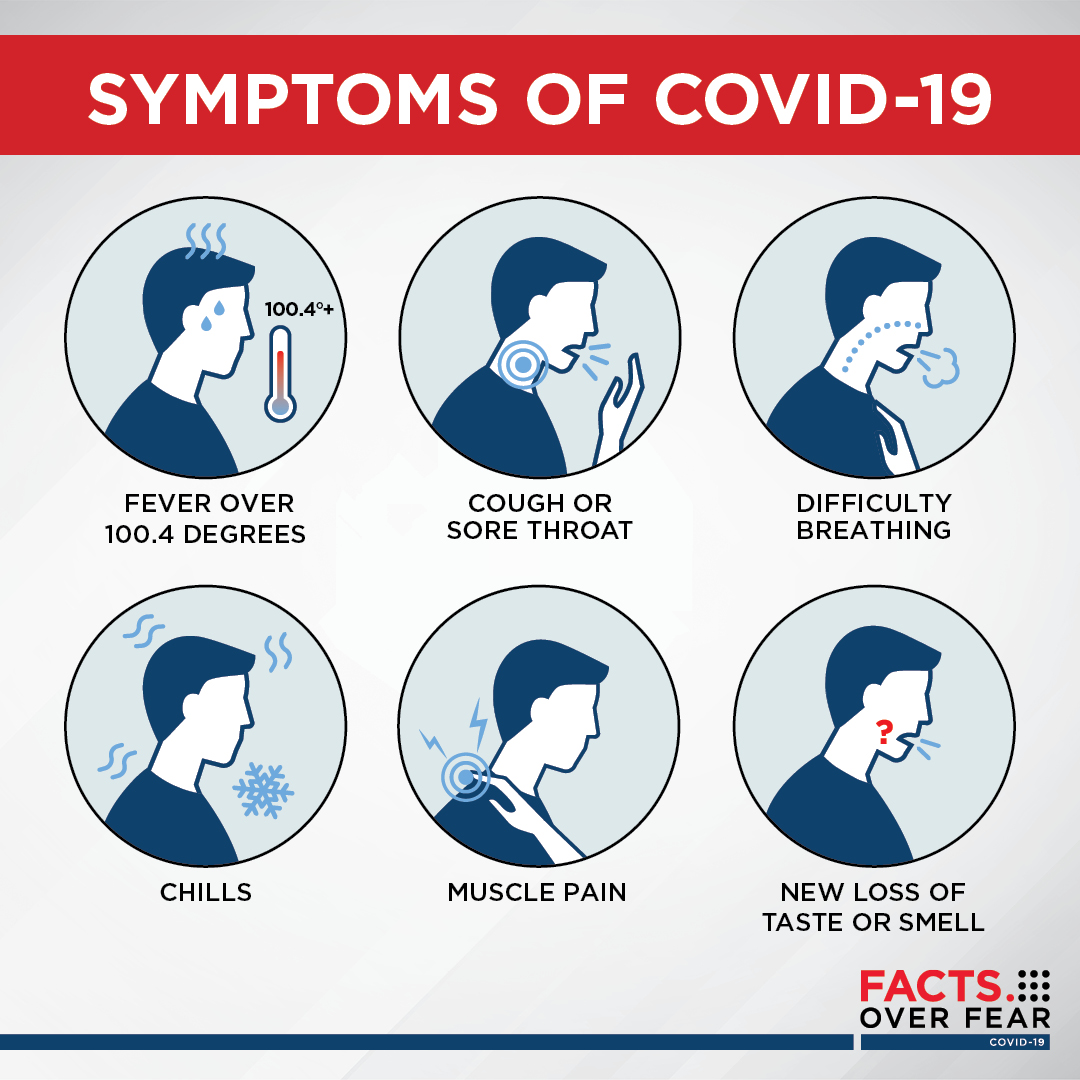 , Inc., Rahway, NJ, USA and its affiliates. All rights reserved.
, Inc., Rahway, NJ, USA and its affiliates. All rights reserved.
Test your knowledge
Take a Quiz!
Sore throat – NHS
Sore throats are very common and usually nothing to worry about. They normally get better by themselves within a week.
How to treat a sore throat yourself
To help soothe a sore throat and shorten how long it lasts, you can:
- gargle with warm, salty water (children should not try this)
- drink plenty of water
- eat cool or soft foods
- avoid smoking or smoky places
- suck ice cubes, ice lollies or hard sweets – but do not give young children anything small and hard to suck because of the risk of choking
- rest
If you have a high temperature or you do not feel well enough to do your normal activities, try to stay at home and avoid contact with other people until you feel better.
How to gargle with salt water
- Dissolve half a teaspoon of salt in a glass of warm water (warm water helps salt dissolve).
- Gargle with the solution, then spit it out (do not swallow it).
- Repeat as often as you like.
Video: how to treat a sore throat
This video shows you how to treat a sore throat.
Media last reviewed: 1 June 2023
Media review due: 1 June 2026
A pharmacist can help with sore throats
You can ask a pharmacist about ways of relieving the pain and discomfort of a sore throat, such as:
- paracetamol or ibuprofen
- medicated lozenges containing a local anaesthetic, antiseptic, or anti-inflammatory medicine
- anaesthetic spray (although there’s little proof they help)
You can buy these treatments from a supermarket or from a pharmacist without a prescription.
Antibiotics
You do not normally need antibiotics for a sore throat because they will not usually relieve your symptoms or speed up your recovery.
They’ll only be prescribed if a GP thinks you could have a bacterial infection.
Non-urgent advice: See a GP if:
- your sore throat does not improve after a week
- you often get sore throats
A severe or long-lasting sore throat could be something like strep throat (a bacterial throat infection).
Urgent advice: Get advice from 111 now if:
- you’re worried about your sore throat
- you have a sore throat and a very high temperature, or you feel hot and shivery
- you have a weakened immune system – for example, because of diabetes or chemotherapy
A severe or long-lasting sore throat could be something like strep throat (a bacterial throat infection).
Immediate action required: Call 999 if:
You or your child:
- have difficulty breathing or are unable to swallow
- are drooling – this can be a sign of not being able to swallow
- are making a high-pitched sound as you breathe (called stridor)
- have severe symptoms and are getting worse quickly
Sore throat symptoms
If you have a sore throat you might have:
- a painful throat, especially when swallowing
- a dry, scratchy throat
- redness in the back of your mouth
- bad breath
- a mild cough
- swollen neck glands
The symptoms are similar for children, but children can also get a temperature and appear less active.
Causes of sore throats
Sore throats are usually caused by viruses (like cold or flu) or from smoking. Very occasionally they can be caused by bacteria.
A sore throat can also be caused by:
- laryngitis
- tonsillitis
- strep throat (a bacterial throat infection)
- glandular fever
Page last reviewed: 05 February 2021
Next review due: 05 February 2024
main signs and hidden dangers
Contents
- 1 Fungal throat infection: how to recognize the symptoms?
- 1.1 Fungal infection of the throat: signs and dangers
- 1.1.1 Signs of a fungal infection of the throat
- 1.1.2 Risks of progression of a fungal infection of the throat
- 1.2 What is a fungal infection?
- 1.
 3 Symptoms of a fungal infection of the throat
3 Symptoms of a fungal infection of the throat - 1.4 How to diagnose a fungal infection of the throat?
- 1.5 How to treat a fungal infection of the throat?
- 1.6 Consequences of not treating a fungal infection of the throat
- 1.7 How can I protect my throat from a fungal infection?
- 1.8 How to avoid re-infection with the fungus?
- 1.9 Immunity and healthy lifestyle in fungal infections of the throat
- 1.10 Which groups of people are more susceptible to fungal infections of the throat?
- 1.11 What are the most effective treatments for a fungal throat infection?
- 1.12 When should I see an ENT doctor if I suspect a fungal infection of the throat?
- 1.13 Related videos:
- 1.14 Q&A:
- 1.14.0.1 What are the main signs of a fungal infection in the throat?
- 1.14.0.2 How does fungal infection in the throat occur?
- 1.14.0.3 Which people are at greater risk of contracting a fungal infection in the throat?
- 1.
 14.0.4 What are the methods for diagnosing a fungal infection in the throat?
14.0.4 What are the methods for diagnosing a fungal infection in the throat? - 1.14.0.5 What are the risks associated with a fungal infection in the throat?
- 1.14.0.6 How is a fungal infection in the throat treated?
- 1.1 Fungal infection of the throat: signs and dangers
Find out what are the main symptoms and signs of a fungal infection in the throat, what can lead to its development and how to treat it to avoid possible complications.
A fungal infection is a type of infection caused by fungi. Although the fungus can attack any part of the body, including the skin and nails, it has recently spread especially to the throat. When mushrooms are found in large numbers in the throat, they can cause a fungal infection of the throat. The manifestations of a fungal infection in the throat can be difficult to identify and diagnose, and over time can cause serious health complications.
The symptoms of a fungal throat infection can vary depending on the type of fungus causing the infection.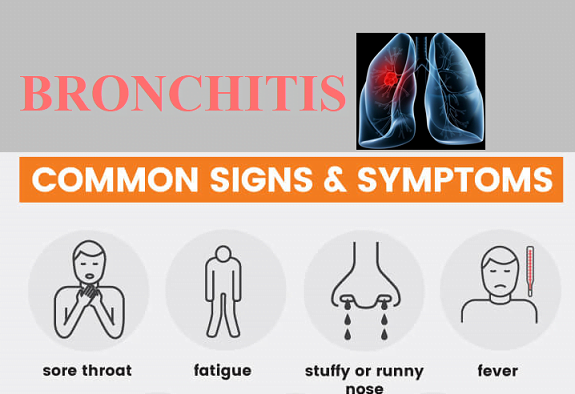 However, common signs are a sore throat that may be aggravated by swallowing, enlarged small lymph nodes around the neck, a white coating on the tongue or back of the throat, complaints of an itchy throat, and weakness in general. If left untreated, a fungal infection can spread to other parts of the body, cause allergies, and also affect organs such as the lungs and brain. Therefore, it is important to seek immediate medical attention if you notice signs of a fungal throat infection.
However, common signs are a sore throat that may be aggravated by swallowing, enlarged small lymph nodes around the neck, a white coating on the tongue or back of the throat, complaints of an itchy throat, and weakness in general. If left untreated, a fungal infection can spread to other parts of the body, cause allergies, and also affect organs such as the lungs and brain. Therefore, it is important to seek immediate medical attention if you notice signs of a fungal throat infection.
Fungal throat infection: signs and dangers
Signs of a fungal throat infection
Fungal throat infection is a disease that can present with a variety of symptoms. The most common signs are:
- pain when swallowing;
- bad breath;
- redness and swelling of the throat;
- white or gray coating on tongue, tonsils or throat;
- cough that does not stop.
If you experience these symptoms, contact your doctor immediately.
Risk of progression of fungal infection of the throat
Fungal infection of the throat is not a serious threat to life, but can cause some complications, such as:
- prolonged sore throat;
- spread of infection to other respiratory organs;
- spreading of a fungal infection on the mucous membrane of the eyes;
- scalding of the throat and larynx;
- violation of the normal functioning of the body.

Therefore, the treatment of a fungal infection of the throat must be started as early as possible in order to avoid possible complications and restore health.
What is a fungal infection?
Fungal infection is a disease caused by various types of fungi that can affect various organs and systems of the human body. If the throat is affected, the fungi are perceived as a foreign body and cause an inflammatory process that can lead to serious complications.
Although fungal infections are less common than viral or bacterial diseases, they can be dangerous enough to pose a hidden threat. Fungi can affect not only the surface layers of the skin and mucous membranes, but also penetrate the body and attack internal organs.
- In the case of a fungal infection of the throat, symptoms may include:
- pain and discomfort when swallowing;
- feeling of dryness and irritation in the throat;
- presence of white coating on the back of the throat or tongue;
- swelling of the throat and its private parts, which may lead to difficulty in breathing and swallowing;
- increased body temperature and general weakness of the body.

It is important to note that fungal infections of the throat can be caused by different types of fungi and have different degrees of danger. Therefore, contacting a doctor and conducting correct and timely treatment is a key moment in the fight against this disease.
Symptoms of a fungal infection of the throat
A fungal infection of the throat presents with various symptoms, but the main symptoms are soreness and discomfort when swallowing. In severe cases, difficulty breathing and swelling of the larynx may occur.
In addition, the following symptoms are possible:
- Sore throat – a feeling of severe burning and pain, which is aggravated by swallowing or talking;
- Temperature increase – with a fungal infection of the throat, there may be a slight increase in body temperature;
- Eustachian tube edema – this symptom causes blockage of the auditory tube, which can cause tinnitus and hearing loss;
- Swelling of the mandibular gland – fungal infection of the throat may cause swelling of the mandibular gland, resulting in pain in the submandibular fossa;
- The presence of a white coating on the tonsils is one of the main signs of a fungal infection of the throat.

If you experience any symptoms of a fungal throat infection, you should contact your doctor for prompt assistance.
How to diagnose a fungal throat infection?
A fungal infection of the throat can be disguised as other diseases, so the following signs should be looked out for:
- Sore throat and discomfort when swallowing. Sometimes the pain may be mild and only felt with certain movements.
- Almost constant feeling of dryness in the throat and itching. This may cause cough and runny nose.
- Appearance of white patches on the back of the throat or tongue. There may also be a metallic taste in the mouth and an unusual odor.
- Frequent relapses of tonsillitis and pharyngitis. This may indicate that the treatment is targeting a false cause.
To diagnose a fungal infection of the throat, it is necessary to consult an ENT specialist. The doctor will examine the throat, possibly taking a smear from the back of the throat to identify the pathogen. Laboratory testing may also be assigned.
The doctor will examine the throat, possibly taking a smear from the back of the throat to identify the pathogen. Laboratory testing may also be assigned.
How to treat a fungal throat infection?
A fungal infection of the throat requires special treatment, which must be prescribed by a doctor. During the examination, the doctor may take tests to determine which fungus is causing the infection and which therapy will be most effective.
Treatments may include fungicidal preparations that kill fungi in the body and may be taken as tablets or oral preparations. In addition, topical treatment may include gargling with antiseptics, using antifungal sprays, or using medicinal solutions prescribed by a doctor.
It is important to remember that treating a fungal throat infection is a process that takes time and patience. Regardless of the treatment you choose, it is extremely important that you take your medications regularly and follow your doctor’s instructions to get the best results and stay healthy.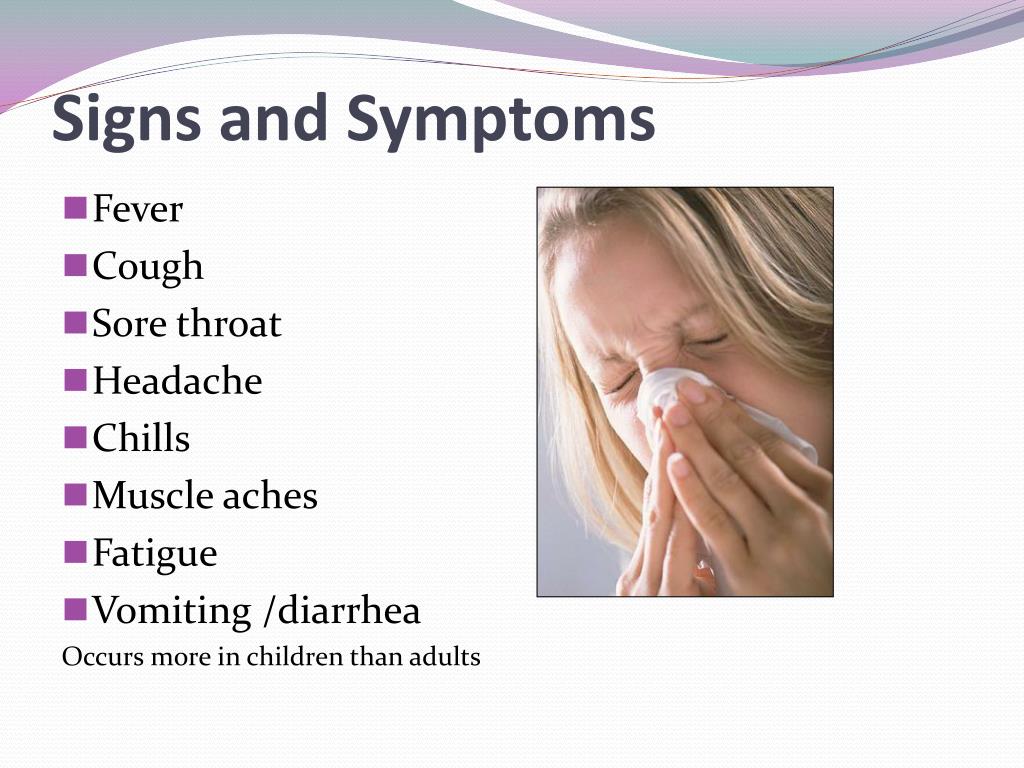
The consequences of untreated fungal infection of the throat
A fungal infection of the throat, left unattended and untreated, can lead to serious health consequences. The most common of these is chronic pharyngeal candidal mycosis, which is characterized by periodic exacerbations and symptoms that may be latent for a long time.
Untimely and incorrect treatment of a fungal infection of the throat can also lead to the development of asthma, oncological diseases of the throat, bronchi and lungs, immunodeficiency conditions, concomitant infections, including HIV infection.
Fungal infection of the throat can cause disturbances in the gastrointestinal tract, deterioration of the general condition of the body, allergic reactions, itching, irritation of the mucous membranes, bleeding of the gums and teeth.
At the first sign of a fungal infection of the throat, seek medical attention and begin treatment as recommended by your doctor to prevent the development of hidden health hazards.
How to protect your throat from a fungal infection?
A fungal infection in the throat can lead to serious health consequences, so it is important to take preventive measures and protect your body from this dangerous disease.
- Personal hygiene . After contact with people, especially those with a fungal infection, it is necessary to wash your hands. Also, change your toothbrushes if they have been in contact with an infected person.
- Strengthen your immunity . Stable immunity protects against infection by viruses, bacteria and fungi. To do this, you need to eat right, lead a healthy lifestyle and exercise.
- Keep your mouth healthy . Regular brushing, flossing and rinsing your mouth with special solutions will help prevent the formation of fungal colonies in the oral cavity.
- Avoid contact with infected people . If a family member has a fungal infection, then you should increase precautions and do not share personal belongings and objects with them.

Taking preventive measures will help protect your throat from a fungal infection. But if you have suspicious symptoms, for example, pain, itching, redness, herpetic rash on the throat, you should immediately contact an ENT doctor to diagnose and treat the disease.
How to avoid re-infection with a fungus?
A fungal infection in the throat can become chronic and reoccur. To avoid re-infection, the following guidelines should be followed:
- Keep your mouth and throat clean. Brush your teeth regularly, floss and use mouthwash. Do not share personal items with other people.
- Strengthen your immunity. A healthy lifestyle, proper nutrition, moderate physical activity, adequate rest, avoidance of stress and smoking will help strengthen your immune system and make your body less vulnerable to fungi.
- Follow the treatment. If you have been diagnosed with a fungal infection in your throat, do not interrupt your treatment or stop taking your medications unless your doctor tells you to.
 Take antibiotics and other medications as directed by your doctor.
Take antibiotics and other medications as directed by your doctor. - Avoid contact with infectious persons. If someone close to you has a fungal infection, avoid close contact with this person and do not share personal items with them. Sharing items and utensils can lead to the transmission of a fungal infection.
By following these guidelines, you can greatly reduce your risk of a throat fungus re-infection and keep yourself healthy.
Immunity and healthy lifestyle in fungal infections of the throat
In the fight against fungal infections of the throat, immunity plays an important role, which helps the body resist and fight fungi.
Along with this, it is recommended to consume live foods, vitamins, minerals and probiotics, which have a beneficial effect on the microflora of the throat.
If you notice signs of a fungal infection, see your doctor for competent help in treating the disease and maintaining a healthy throat.
- What to do: Strengthen the immune system through a healthy lifestyle, proper nutrition, and giving up bad habits.
- What to eat: foods, vitamins, minerals, probiotics.
- What to watch out for: Look for signs of a fungal throat infection and seek medical attention immediately for treatment.
Which groups of people are more susceptible to fungal infections of the throat?
Immunocompromised people: People with a weakened immune system, such as people receiving chemotherapy, immunosuppressants, HIV infection or diabetes, are most vulnerable to fungal throat infections. Their bodies cannot fight infection effectively, so they are more likely to contract a fungal infection.
People working in conditions of high humidity and heat: The environment in which a person is located also plays a significant role in the occurrence of fungal infections. If the building has high humidity and temperature, then the risk of infection increases. People working in such environments, such as cooks, laundry workers, gardeners, etc., are at increased risk.
If the building has high humidity and temperature, then the risk of infection increases. People working in such environments, such as cooks, laundry workers, gardeners, etc., are at increased risk.
People with a disturbed microbiome: Studies have shown that people with a disturbed throat microbiome are more likely to contract a fungal infection. Certain bacteria in the throat can create an antifungal environment to keep fungi from growing. If these bacteria are disturbed, fungi can find the optimal microclimate for growth and development.
People with poor hygiene: Poor oral hygiene can promote the growth and development of fungi in the throat. Poor hygiene practices such as infrequent handwashing, sharing utensils and utensils, and wearing a dirty mask can increase the risk of infection.
What are the most effective treatments for a fungal throat infection?
Antimycotic drugs are the basis for the treatment of fungal infections. They destroy the fungal cell, block its further development and accelerate the healing of the affected mucosa. The most effective are drugs containing fluconazole, itraconazole, ketoconazole and other azoles.
They destroy the fungal cell, block its further development and accelerate the healing of the affected mucosa. The most effective are drugs containing fluconazole, itraconazole, ketoconazole and other azoles.
Homeopathic remedies can be used as an additional treatment. Some homeopathic remedies, such as Sanguinaria, Lachesis, Arsenicum album, are specifically designed to treat fungal infections of the throat. However, before using homeopathic remedies, it is necessary to consult a doctor and make sure that they are freely compatible with the main drug.
Flushing the throat with solutions of water and salt or blue vitriol can help eliminate fungal deposits on the mucous membrane of the throat. However, this method of treatment cannot replace the main therapy and should be used only on the recommendation of a doctor.
General strengthening of the immune system is also important in the fight against fungal infections.:max_bytes(150000):strip_icc()/overview-of-strep-throat-1191987_final-21489a625c774930abb4a3c12e13b0a6.png) Regular exercise, a nutritious diet, adequate sleep, and avoiding bad habits will help boost immunity and speed up the healing process.
Regular exercise, a nutritious diet, adequate sleep, and avoiding bad habits will help boost immunity and speed up the healing process.
Advantages and disadvantages of methods of treating fungal infection of the throat Method of treatment Advantages Disadvantages
| Antimycotic drugs | Effective destructive effect on fungi | May cause side effects, not recommended during pregnancy and lactation |
| Homeopathic remedies | Natural composition, no side effects | Failure to help in case of severe disease |
| Mountain wash la | Accessibility, removal of deposits on mucosa | Failure to replace primary therapy, failure in severe cases |
| Strengthening the immune system | Increasing the body’s resistance to disease | Does not directly contribute to the elimination of fungal deposits on the mucous membrane |
la?
A fungal infection of the throat can lead to serious complications if it is not treated promptly. Therefore, at the first signs of the disease, it is recommended to consult a doctor-ENT.
Therefore, at the first signs of the disease, it is recommended to consult a doctor-ENT.
You should also pay attention to the duration of the symptoms – if they last for a week and do not go away, then this may be a sign of a fungal infection of the throat. In such cases, you should consult a doctor-ENT to determine the exact diagnosis and prescribe the appropriate treatment.
An ENT doctor can examine your throat and take tests to determine if you have a fungal infection. After establishing the diagnosis, the doctor will prescribe an individual course of treatment, which may include the use of antibiotics or antimycotic drugs.
Related videos:
Q&A:
What are the main signs of a fungal infection in the throat?
The main signs of a fungal infection in the throat are: painful swallowing, red throat, dry mucous membranes, white patches on the throat and tongue, slurred speech, difficulty breathing and fever.:max_bytes(150000):strip_icc()/throatpainfinal-01-5c3ba1dd46e0fb0001061529.png)
How does a fungal infection in the throat occur?
Infection with a fungal infection in the throat occurs through contact with a sick person through coughing, sneezing, talking, as well as when using the same dishes, towels, toothbrushes, hygiene items used by an infected person.
Which people are at greater risk of contracting a fungal infection in the throat?
People with a weakened immune system, as well as people who drink alcohol, smoke, are in stressful situations, are carriers of HIV infection, have diseases of the internal organs or skin, are at greater risk of contracting a fungal infection in the throat.
What methods of diagnosis of a fungal infection in the throat?
The following methods are used to diagnose a fungal infection in the throat: complete blood count, bacteriological culture of the throat, smear for fungi. Additional studies may also be required, such as bronchoscopy, chest X-ray, etc.
What are the dangers associated with a fungal infection in the throat?
The hidden dangers of a fungal infection in the throat are weakened immunity, transmission of the infection to other people, as well as the possible development of complications, such as bronchitis, pneumonia, cancer of the throat and lungs, and other circulatory organs. Therefore, it is important to seek medical help at the first sign of the disease.
Therefore, it is important to seek medical help at the first sign of the disease.
How is a fungal infection in the throat treated?
Treatment of fungal infection in the throat consists of complex therapy, including antifungal drugs, anti-inflammatory drugs, antibiotics, immunomodulators, treatment of comorbidities and lifestyle changes. It is important to follow all the doctor’s prescriptions and not interrupt the course of treatment. It is also necessary to provide your body with useful substances, give it rest and avoid stressful situations.
types, causes, symptoms, diagnosis, treatment
Be close to family and friends together Tantum ® Verde
Special for adults
Tantum Spray ® Verde Forte
9000 4
more
Tantum Spray ® Verde
- Reduces sore throat from 1 minute 5, 6, 9 0390 7
- Penetrates into inflammation 7
- Acts on bacteria , viruses and fungi 1
- Preserves immunity 8
- Suitable for adults and children from 3 years* 2
details
Tantu tablets m ® Verde
- Reduces sore throat from 1 minute 5, 6, 7
- Penetrates into inflammation 7
- Effective against bacteria, viruses and fungi 1
- Total 3 tablets per day 5, 6, 7
more details
Pharyngitis
Inflammation of the back of the throat, may feel like pain or scratchy in the throat. Often accompanied by pain when swallowing and hoarseness 10 .
Often accompanied by pain when swallowing and hoarseness 10 .
SARS
The most common infectious disease accompanied by runny nose, cough, sneezing and headache 11 .
Tonsillitis
Inflammation of the tonsils with sore throat, difficulty swallowing, high fever and headache 10 .
Laryngitis
Inflammation of the mucous membranes of the larynx. May be accompanied by hoarseness, difficulty swallowing, coughing, and thick mucus in the throat 12 .
Uvulitis
Inflammation of the uvula. Usually accompanied by itching, burning or sore throat. May have difficulty swallowing and breathing 13 .
Streptococcal Angina
A bacterial infection that causes inflammation and sore throat. The main causative agent is group A streptococcus 10 .
Literature:
0527
2. Instruction for medical use of Tantum
® Verde spray 0. 15%
15%
3. Instruction for medical use of Tantum
® Verde tablets 3 mg 24 4. Instructions for medical use of Tantum solution ® Verde 0.15%
5. Savlevich E.L., Doroshchenko N.E., Slavinskaya I.S., Farikov S.E. Important nuances of the inflammatory process in the oropharynx and the choice of optimal treatment tactics. Medical Council No. 16, 2017.
6. Lazareva N.B., Akhunov V.M. Influence of the severity of ARVI symptoms on the frequency of self-administration of antibacterial drugs in adult patients. Issues of quality assurance of medicines No. 4 (18) 2017.
7. Polyakova A.S., Bakradze M.D., Tatochenko V.K. “Treatment of viral tonsillitis” Farmateka. 2018; Pediatrics.
8. Poryadin G.V. et al. Mechanism of action of benzydamine on local inflammation, 2018 (in press).
9. Catic T, et al. Mater Sociomed 2018; 30(1): 43–48.
10. Harvard Health Publishing. Sore throat (Pharyngitis).



 3 Symptoms of a fungal infection of the throat
3 Symptoms of a fungal infection of the throat 14.0.4 What are the methods for diagnosing a fungal infection in the throat?
14.0.4 What are the methods for diagnosing a fungal infection in the throat?
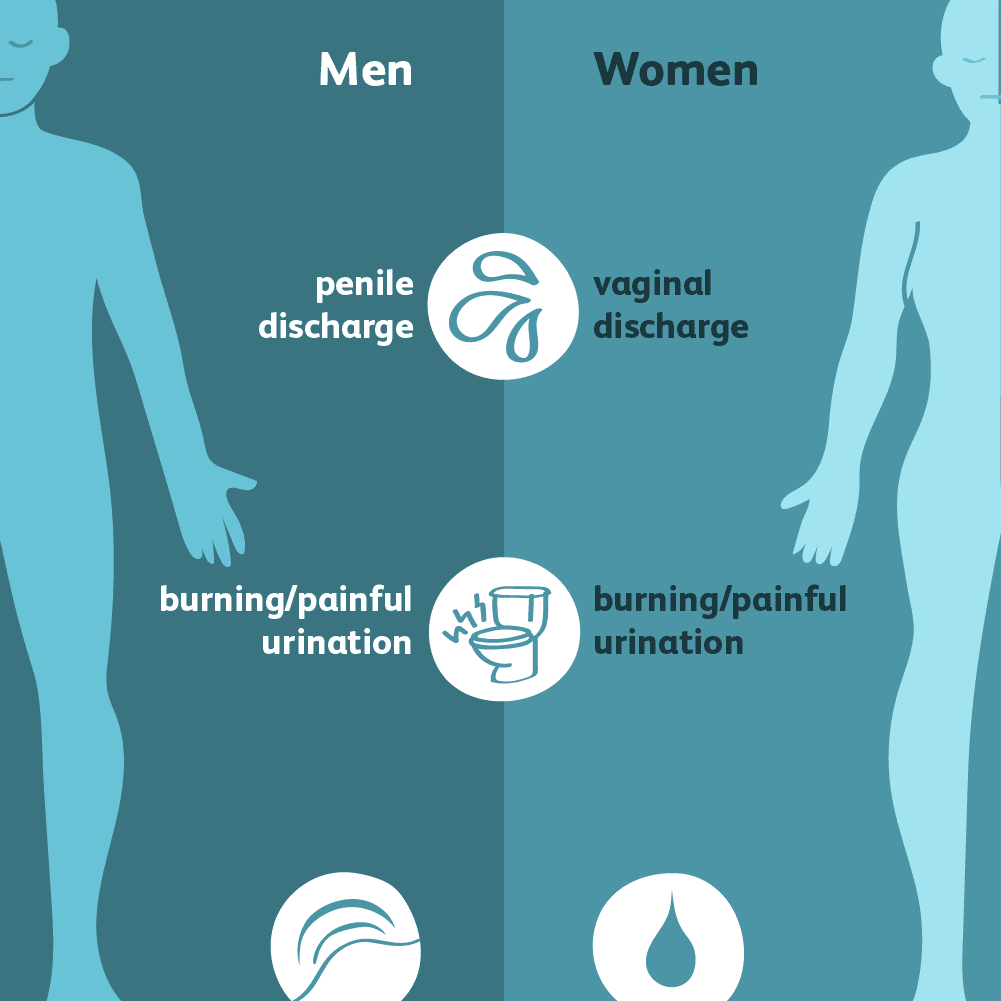
/strep-throat-symptoms-5ae1f28aeb97de003955dcd2.png)
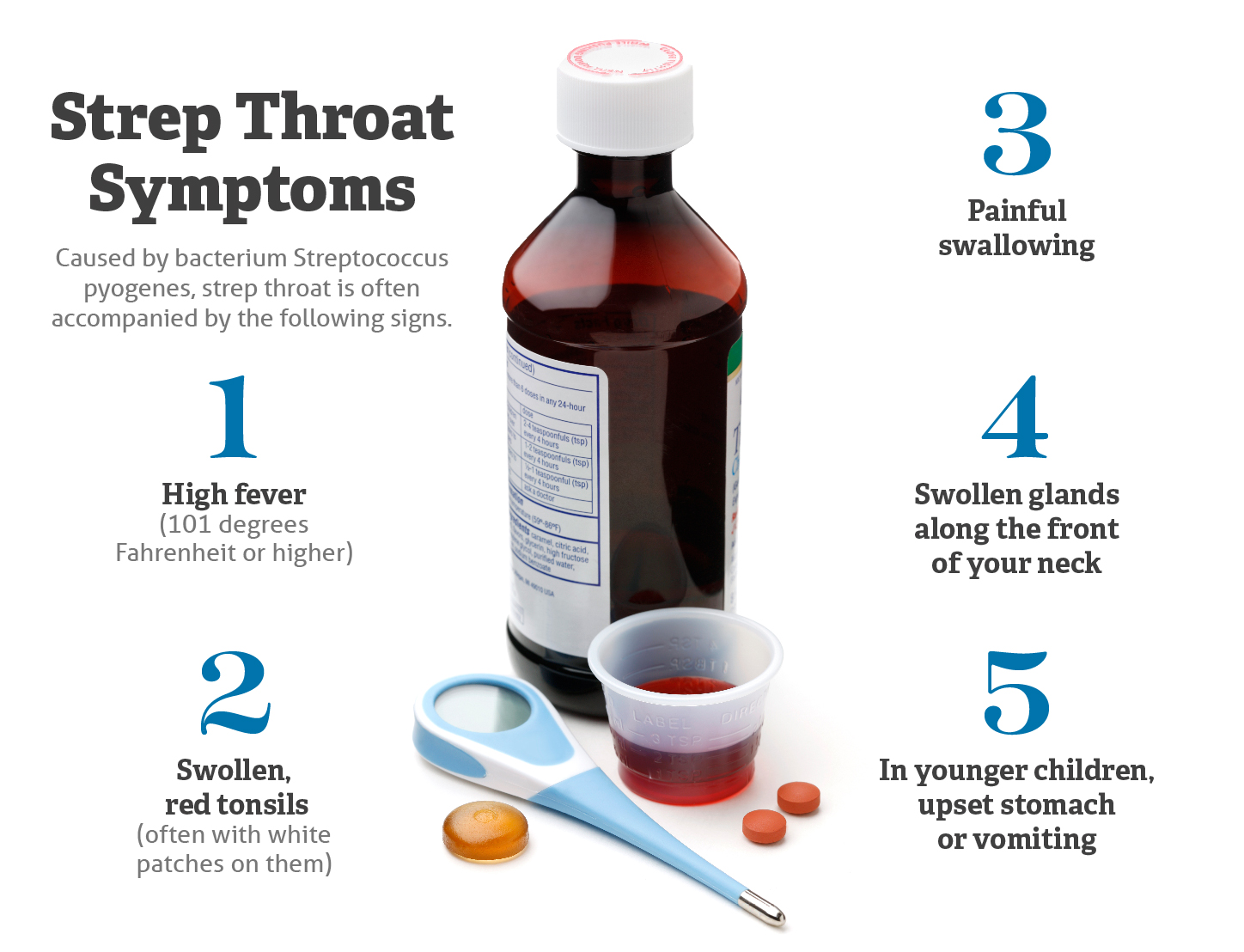
 Take antibiotics and other medications as directed by your doctor.
Take antibiotics and other medications as directed by your doctor.